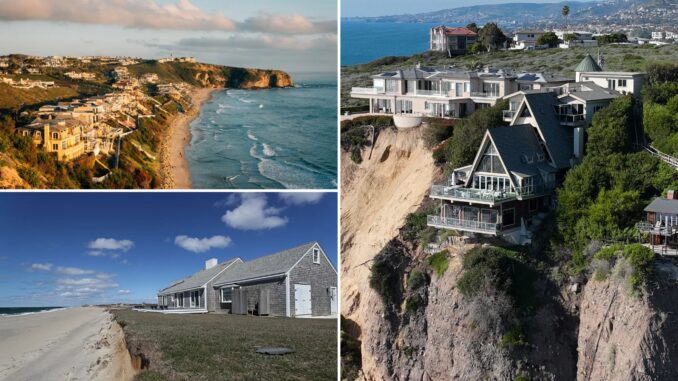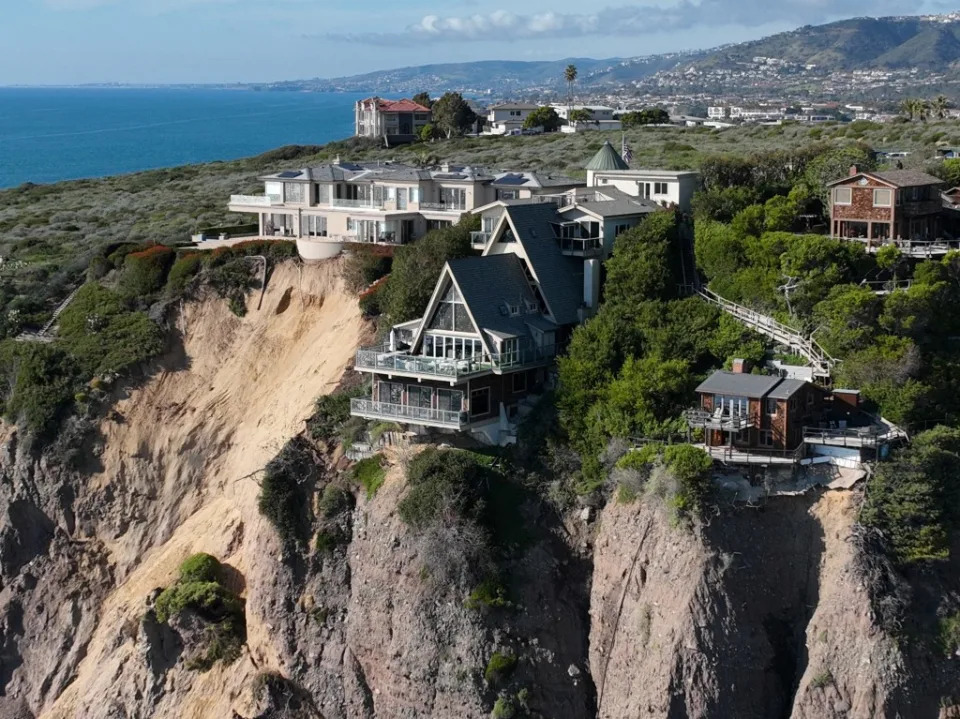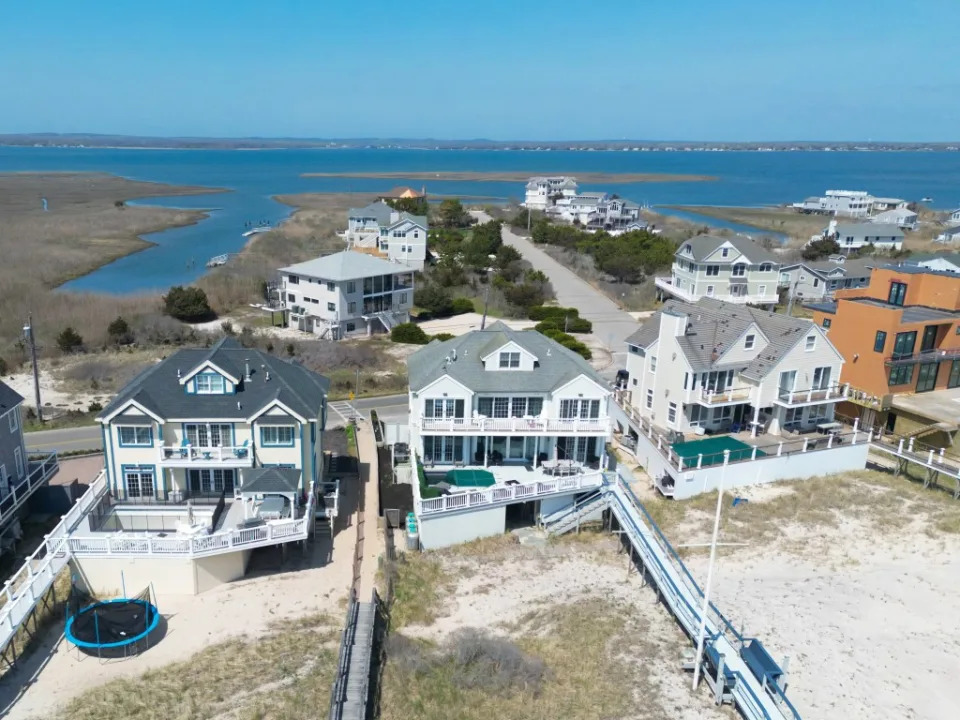
The glittering mansions lining America’s coastline are facing a watery grave as rising sea levels and ferocious storms take their toll.
From the sun-soaked shores of Dana Point, California, to the elite enclaves of Long Island, New York, and Nantucket, Massachusetts, the once-unassailable value of some of the nation’s priciest real estate is sinking fast, according to CNBC.
This year’s hurricane season has already kicked off with a vengeance, with the National Oceanic and Atmospheric Administration (NOAA) predicting up to 13 hurricanes, including up to seven major storms. The implications for coastal homeowners are dire, as risk models show real estate values plummeting faster than expected.


Take Nantucket, where a $2 million property listed last summer sold early this year for a mere $600,000. A modest Nor’easter wiped out 70 feet of the beach, leaving the house precariously perched on eroding sands.
The new owner shrugged off the risk, telling the Boston Globe, “the price mitigates the risk to a good degree.”
Shelly Lockwood, a Nantucket real estate agent, revealed the shocking new reality.
Several homes that should have sold for $10 to $12 million are now going for a fraction, she told CNBC.
“One sold in the mid 7s, and one sold in the mid 8s,” Lockwood said, meaning the mid-$700,000s and the mid-$800,000s.
Lockwood has started a seminar to help fellow agents reprice homes at risk.

“I think we owe it as a duty to our clients to tell them what the risks are, and I was getting frustrated that that wasn’t being communicated to my satisfaction, because I saw houses selling and I thought that’s not worth that, it’s falling in the ocean,” she said.
On Long Island’s eastern tip, Montauk residents are scrambling to save their multimillion-dollar homes from relentless storms.
Kay Tyler, executive director of Concerned Citizens of Montauk, told the outlet, “Where we’ve seen flooding in the past and the water subsiding right away, it’s not subsiding anymore. We have a friend that has a $10 million home, and he’s not even sure what to do with it because if he sells it it’s never going to be the $10 million he bought it for.”
Across the East and Gulf coasts, 33 ZIP codes boast median home values above $1 million. Yet, 77,005 properties face significant flood risks, potentially losing $100 billion in value, according to First Street, a climate risk firm.

Attorney Chris Farley is aiding Nantucket homeowners in slashing property taxes as their homes and beaches crumble. “I think we just put our heads in the sand,” Farley said. “Values weren’t going down until the last 10 years and it’s still been kind of quiet reduction.”
Farley highlighted a cliffside property assessed at $2.2 million but now worth a fraction, with neighboring homes reassessed at just $500,000 and $250,000.
“I would say 12-15 feet of sand is gone,” Farley told the outlet, pointing to geo tubes meant to be covered. The stairs to the beach are gone,” he said, noting that this drastically impacts property values.
On another Nantucket beach, sand has buried homes up to the windows, exposing septic systems and utility wires, leading to town condemnations. “This all happened since last fall,” said Lockwood.

Homeowner John Conforti, who has lived there for 42 years, faces a front yard filled with sand. “We all say one more year,” he lamented. Lockwood estimates that without these risks, Conforti’s home would be worth $2.5 million, but now might fetch only $500,000 — if that.
As property values tumble and taxes are reassessed, local economies could face serious strain. Nantucket residents are now voting on which areas need the most protection — and who will foot the bill.
Meanwhile, Montauk experts are reevaluating coastal resilience plans, outdated within a decade by the accelerating impacts of climate change.
